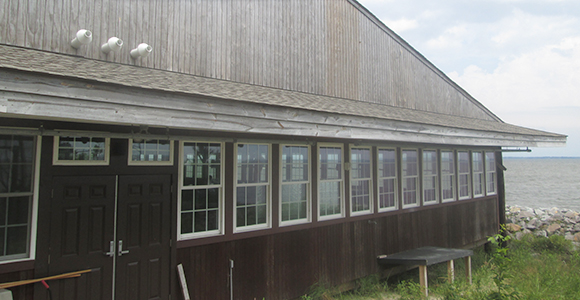
Frank Hester
Protecting our park resources, visitors, and employees from the dangers posed by structural fire is a responsibility for every unit in the National Park Service.
However, with only a few exceptions, the national parks do not have full-time structural fire staff who can devote their time to preventing or preparing for fires. For the great majority of parks, fire prevention duties are collateral--work loaded onto an already full plate. So, what can we do? Are any parks having success with fire prevention programs?
The answer is YES! Many parks have accomplished great things when it comes to fire prevention. In fact, I’m willing to bet that many of you reading this know of at least one fire prevention activity that has been implemented in your park. If you’ve had successes similar to those below, thank you for a job well done and we hope you will let us know about it. Let’s look at some great examples of important and potentially life-saving projects that have recently been completed in the parks.
If you have been assigned fire prevention or education responsibilities in a park, one of the best ways to achieve success is by maintaining a relationship with your regional structural fire manager (RSFM). They are in position to assist you with anything related to structural fire, so take advantage of this great resource. In addition to asking for their help, it’s vital to ensure that they are aware of any planned construction or renovation projects. A good example of keeping the RSFM in the loop recently occurred at Cape Hatteras National Seashore.
The park-owned “Gazebo” building underwent a large rehabilitation, and during this work, fire protection and life safety systems were installed or upgraded. Among other improvements, fire sprinkler and alarm systems were upgraded and new code-compliant egress doors were added. The park structural fire coordinator (PSFC) closely monitored the work being done and ensured that a qualified inspector conducted a proper final inspection prior to the work being completed, accepted, and paid. Frequent contact between the PSFC and RSFM ensured that all necessary upgrades were made and that the work was properly completed.
In addition to a number of projects to upgrade fire protection systems in lodges and office buildings, Yosemite National Park completed the installation of fire sprinkler systems in 23 park residences and the daycare center. In the past year, Yosemite also conducted more than 540 urban interface defensible space surveys for residences at risk in the park, helping to keep structures safe from the threat of wildland fire involving structures.
At Petersburg National Military Park, staff have been working hard to implement proper prevention measures for all of their buildings, including more than 20 historic buildings. They completed a park structural fire management plan, as well as evacuation plans for many of their buildings. Annual fire and life safety inspections were completed for all buildings. Any problems identified were clearly communicated to the division responsible for the building and to maintenance staff, and then tracked to ensure they were corrected.
A great many fire prevention accomplishments are being completed at Golden Gate National Recreation Area. These include ongoing inspections of buildings and fire and life safety inspections for the many special events they host, such as concerts or other public gatherings. Golden Gate also conducts fire extinguisher training for employees and park partners. This training recently paid off when an employee suppressed a fire in a trash can using a portable fire extinguisher.
Sleeping Bear Dunes National Lakeshore is another park where a lot of good fire prevention work is being accomplished. Staff have been working hard to develop and conduct evacuation drills. During a drill at the headquarters building, it was discovered that many employees in the building could not hear the fire alarm. They had the alarm system fixed to address this issue. Finding this out during a controlled drill, and not waiting for a true emergency, has greatly improved the safety of all occupants. Sleeping Bear Dunes has also signed memoranda of understanding (MOUs) with all eight fire departments surrounding the park. They have agreed to respond in the park if called for in an emergency.
At Blue Ridge Parkway, all 500 portable fire extinguishers and more than 125 structures are receiving annual inspections. In addition, 175 employees--more than 80% of the workforce, including all seasonal and year-round positions--have received hands-on extinguisher training. The safety officer at Blue Ridge has taken on the responsibilities of the park structural fire coordinator and devotes time to seeing these tasks to completion.
These are just a few examples of great fire prevention work getting done in our parks. There’s no question it is difficult to accomplish some of these tasks when there is a full-time job to do. When asked how they achieved their success, parks recommended first focusing on smaller projects that are easier to accomplish. Dedicate the time on those things and work to gain support from other divisions in the park. With a team approach, and at least one person staying on point to see the project through to completion, success comes rather easily and quickly.
The many hours of hard work and dedication by our employees is evident. They are protecting the lives of thousands of visitors and employees, as well as protecting our resources, many of which are historic structures and national icons. Yes, there are many challenges, but it is encouraging to witness improvements despite these hurdles. For all of you working to improve fire safety, thank you! For those of you who have questions, need help on specific projects, or just don’t know where to start, contact your regional structural fire manager. Keep up the good work!
Last updated: November 27, 2016
